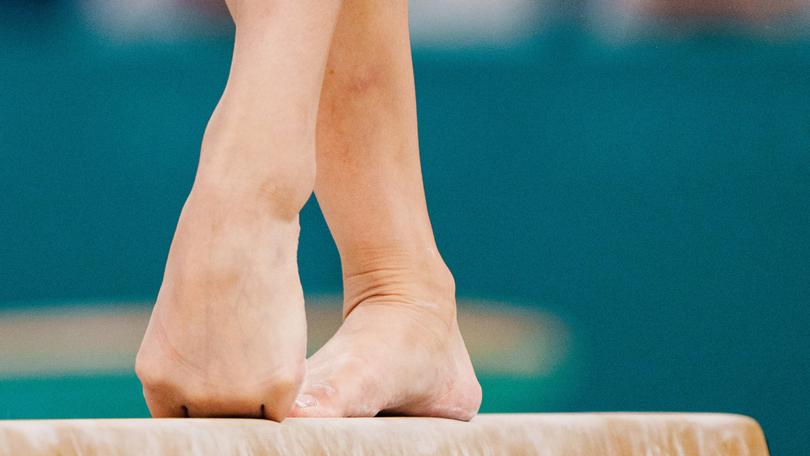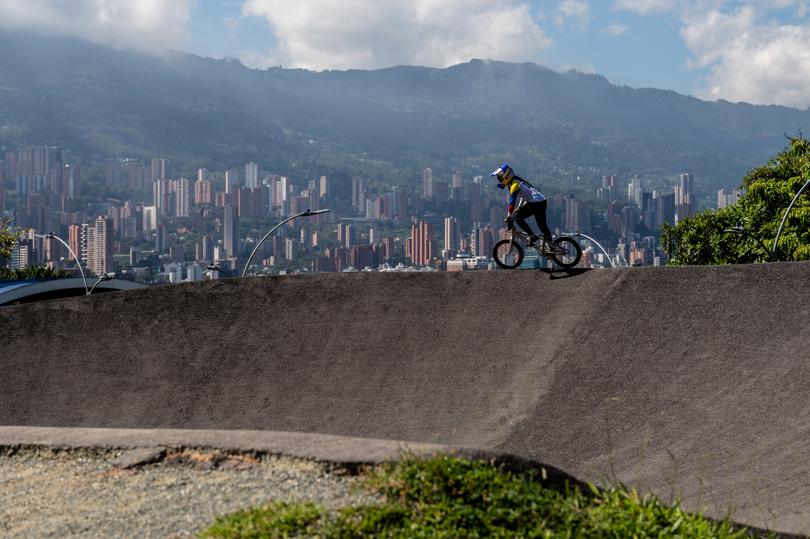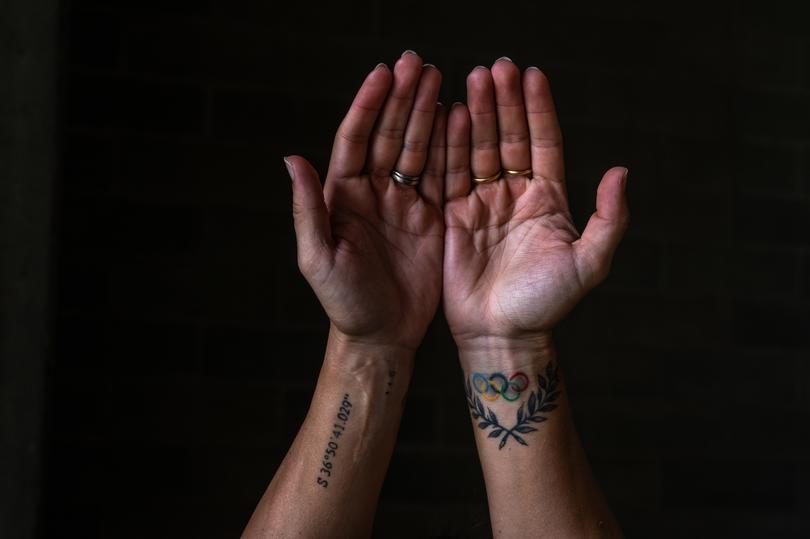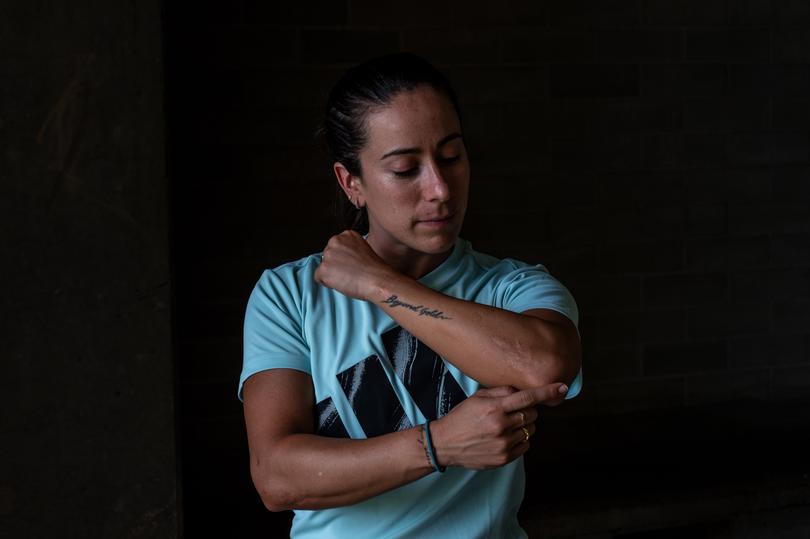‘My joints are of an 80-plus-year-old’: How the Olympics breaks athletes’ bodies

Mariana Pajón is one of the world’s most accomplished BMX riders, and she can quickly recount some of her career totals: 18 world championships, two Olympic gold medals in racing (in 2012 and 2016) and one silver, in Tokyo in 2021.
But Pajón, a Colombian, can also rattle off the much more painful totals of the cost of so much riding: 25 fractures, 12 screws, eight surgeries and countless tears of ligaments and tendons. The medical hardware in her left arm and knee included so much metal that she used to travel with her X-rays. Opening a door or serving a glass of water hurts.
“My joints are of an 80-plus-year-old,” Pajón said with a laugh. She is 32.
Sign up to The Nightly's newsletters.
Get the first look at the digital newspaper, curated daily stories and breaking headlines delivered to your inbox.
By continuing you agree to our Terms and Privacy Policy.Pajón, who has been racing competitively since she was 4, wasn’t lamenting her injuries during a recent conversation. They are simply a fact of life for an athlete.
Wear and tear naturally degrades human bodies, even the most talented ones. But performing at the elite level, especially in high-impact Olympic sports such as wrestling, rugby or gymnastics, inherently has more risks. Shoulders give out. Ligaments tear. And, for some, metal screws and titanium plates become just more hardware in the lifelong pursuit of gold, silver and bronze.
Pajón spoke of “what you have to give, including your body, to achieve a dream and achieve something for your country.”
“It looks so easy and so fast — in Paris, it’s a 35-second lap,” she said, “and you go through so much, through so many operating rooms, through so much pain, but it’s not easy.”

Fans watching her and other athletes compete in the Paris Olympics may not realise the aches and pains that they have endured to reach that point. They will surely not see the discomforts that will linger far beyond this summer, sometimes for the rest of those athletes’ lives.
“A lot of Olympians will just push their body to a breaking point just to see where they can go,” said Kyle Dake, 33, an American who won bronze in 74-kilogram (about 163 pounds) freestyle wrestling in Tokyo and is competing in Paris.
He spent years, he said, “trying to find the boundaries and the limits of the human body.”
“I found those limits, and now I know where to go and where not to go,” he continued. “But it’s pretty amazing what we all collectively go through to try to be the best in our sport. I don’t recommend it for everybody.”
Because of the nature of their sports, Olympians like Pajón and Dake have endured a lot. In BMX racing, the bikes are rigid, so the body absorbs much of the force from jumps. Pajón said riders could reach more than 35 mph.
“We don’t have suspensions,” she said. “Our joints are the suspensions: wrists, elbows, shoulders, back, knees, ankles. Technique helps you compensate for that. But it’s a sport that at a high-performance level is healthy, but also not healthy.”

In gymnastics, the joints are under constant heavy strain. In boxing, punches pound the body. In wrestling, bodies are twisted and slammed onto the mat. In rugby sevens, players tackle one another, often while running at full speed. In field hockey, sticks can crush fingers so hard that it can lead to amputation.
In equestrian sports, falls from the horses batter the riders’ bodies. Boyd Martin, 44, of the United States has had 22 surgeries and 19 broken bones, and inside him are five plates, two screws and a metal rod.
“When I wake up in the morning, my body is really sore,” said Andrew Knewstubb, 28, a rugby sevens player from New Zealand who claimed a silver medal in the Tokyo Games. To compete in Paris, he overcame two ACL ruptures and an infection in his left knee. (New Zealand was eliminated in the quarterfinals this year.)
While at the athletes’ dining hall in the Olympic Village in Paris, Knewstubb said, it blew his mind to see so many different body shapes and sizes but also the scars of injuries and surgeries.
Pajón’s career may be one of the most dramatic in terms of breadth of ailments and sheer willpower (or stubbornness) to push on. To name a few:
There’s her left arm injury from training in her hometown, Medellín, in 2008 in which she suffered a serious open fracture. The damage included her arteries and required two plates to repair.
There are the broken ribs and bruised kidney from a crash in 2012. She considers this her most dangerous injury.
There’s the left knee injury from 2018, when her ACL exploded after her foot slammed against the asphalt after a jump. The complications during that surgery and recovery were so numerous that she considered retirement.
And there’s the right elbow injury from 2019, when she dislocated the joint and tore all of the ligaments, and it grew worse because she kept competing. She needed three surgeries last year, as recently as December, to compete in Paris.

“There are things I could have done much more responsibly: better recoveries or not pushing my body so young,” Pajón said. “But my intensity and my obsession to win and to be the best and to train — I have to have a limit, too, and think about the future. But when you’re young, you don’t think about that. I gave everything.”
While wrestling will always be physically tough, Dake said that advances in technology, training and medicine could prevent some injuries and help recoveries.
“It used to be jump in a garbage bin with ice in it and then you were good,” said Dake, who estimated that he had broken every finger at least once and his ribs at least four times, in addition to his scapula. He also has endured two foot surgeries and reconstructions of a shoulder and a knee.
“It’s a lot more sophisticated now, and you can really tailor to everyone’s needs,” he said. “It’s pretty cool that we’re in a place now where if you go looking for it, you can find someone to help you, and it just makes life a lot more enjoyable in the sport.”
Pajón said she had learned to wear more protection when riding and to warm up more. She urged youngsters to not make the same mistakes she did. She has leaned on people such as her husband, Vincent Pelluard, who is a former Olympic BMX biker and her current coach, and her mental coach, Jonathan Bustamante, to help her pull through the toughest moments.
But she also said she had learned to accept the pain she feels every day. Even though she might not look like an athlete when she runs because of her injuries, she said, and although her body may creak as she walks up stairs, it has all been worth it. She wants to keep competing.
“I gave a lot to get a lot,” she said, “and I wouldn’t change it for anything.”
This article originally appeared in The New York Times.
© 2024 The New York Times Company
Originally published on The New York Times
